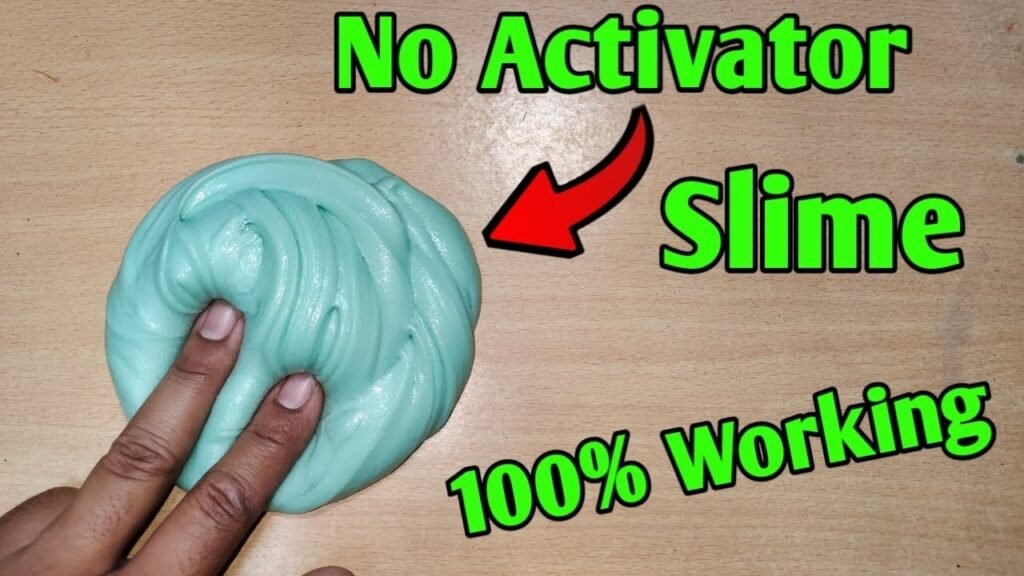Making slime is an engaging and fun activity for kids and adults alike. It’s not just a playful pastime but also a fantastic way to introduce basic chemistry concepts in a hands-on manner. While many slime recipes call for an activator to achieve that perfect gooey consistency, it’s possible to create slime without one. This guide will explore various methods and ingredients you can use to make slime without an activator, ensuring a safe and enjoyable experience for everyone involved.
Understanding Slime Basics
Before diving into the methods, it’s essential to grasp what slime is and why activators are commonly used. Slime is a non-Newtonian fluid that behaves both as a solid and a liquid, depending on the force applied. Activators (like borax, saline solution, or liquid starch) typically contain an ingredient that interacts with the glue (a common slime base) to form the slime’s unique texture. However, concerns over safety and skin sensitivities have led many to seek alternatives.
The Role of Alternatives in Slime Making
In the absence of traditional activators, other household ingredients can induce the necessary chemical reaction to create slime. These alternatives not only make the process safer but also open up a world of creativity and experimentation, allowing for the customization of texture, color, and even scent.
Method 1: Using Baking Soda and Contact Lens Solution
One popular method involves using baking soda and contact lens solution. The key ingredient in the contact lens solution that helps in slime formation is boric acid, which acts similarly to borax but is typically less concentrated and gentler on the skin.
Ingredients:
- 1/2 cup of PVA (polyvinyl acetate) glue
- 1 to 2 tablespoons of baking soda
- 2 to 3 tablespoons of contact lens solution
- Food coloring or glitter (optional)
Instructions:
- In a bowl, mix the PVA glue with a few drops of food coloring or glitter, if desired.
- Stir in the baking soda until the mixture is homogeneous.
- Gradually add the contact lens solution, mixing continuously. The slime will begin to form and pull away from the sides of the bowl.
- Knead the slime with your hands until it reaches the desired consistency. If it’s too sticky, add a little more contact lens solution.
Method 2: Cornstarch and Shampoo or Dish Soap
For a different texture and an activator-free recipe, cornstarch combined with shampoo or dish soap can create a unique type of slime. This combination is perfect for those looking for a more moldable and less stretchy slime.
Ingredients:
- 1/2 cup of cornstarch
- 1/4 cup of shampoo or dish soap
- Food coloring (optional)
Instructions:
- In a bowl, combine the cornstarch and shampoo or dish soap. If you want to add color, mix in the food coloring now.
- Stir the mixture until it starts to thicken. If it’s too runny, add more cornstarch; if too thick, add a bit more shampoo or dish soap.
- Once the mixture reaches a dough-like consistency, knead it with your hands until smooth.
Method 3: Psyllium Husk
Psyllium husk, a natural fiber supplement, offers a unique and entirely natural way to make slime. When heated with water, psyllium husk forms a gooey and stretchy substance that closely resembles traditional slime.
Ingredients:
- 1 tablespoon of psyllium husk
- 1 cup of water
- Food coloring (optional)
Instructions:
- In a microwave-safe bowl, mix the psyllium husk with water and a few drops of food coloring.
- Microwave the mixture for 5 minutes, watching closely to prevent it from boiling over. Stir every minute.
- Let the mixture cool down. It will thicken and turn into slime as it cools.
Customizing Your Slime
Regardless of the method chosen, customizing your slime can make the process even more enjoyable. Adding food coloring, glitter, or even essential oils for scent can create a personalized slime experience. Experimenting with the proportions of ingredients can also alter the texture, making the slime thicker, runnier, more stretchy, or fluffier.
Safety Tips and Cleanup
While making slime without traditional activators is generally safer, it’s still important to follow safety guidelines. Always supervise children during slime-making activities, especially when using ingredients like contact lens solution. Additionally, be mindful of allergies and skin sensitivities to any ingredients used.
Cleanup can be made easier by making slime on a washable surface and keeping vinegar handy to dissolve any stubborn slime residues.
Conclusion
Making slime without an activator is not only possible but also opens up a world of creativity and experimentation. By using household ingredients like baking soda, contact lens solution, cornstarch

